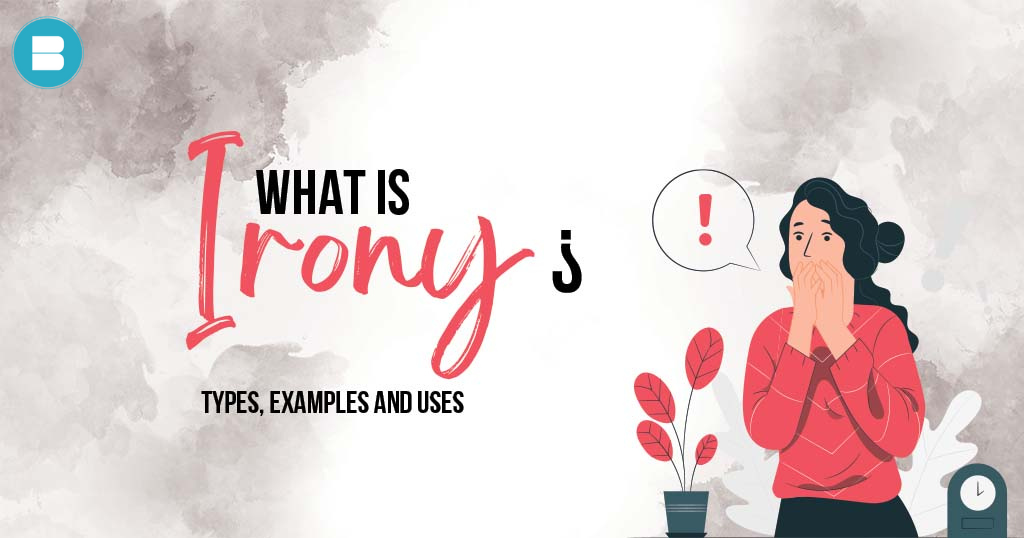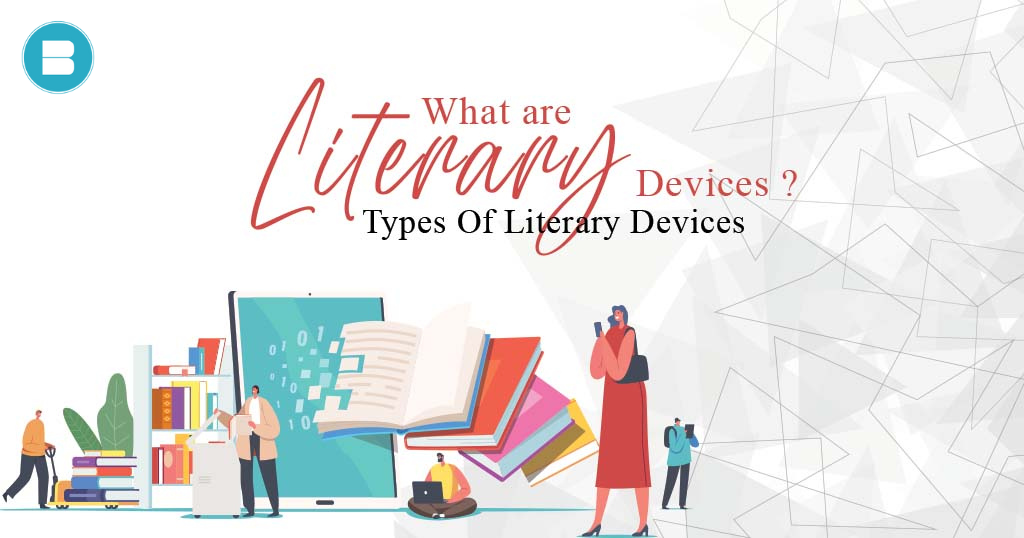
What is Irony: Types, Definition, Uses & Examples.
Before I tell you what is Irony and how it has been used in the literature world, I’d like to quote one of the best quotes that could be a great example of Irony which is said by Gustave Flaubert – “Irony takes nothing away from pathos…” Ah, irony – that mischievous trickster of language. We often see it as a tool for belittling and mocking, a way to lessen the emotional weight of a situation. But this quote flips that notion on its head, declaring that irony has no power to diminish the heartache and pathos of life. How ironic, indeed! Read: Here’s a list of Top 10 Drama Fiction Books of all Time. Irony is the use of words to communicate a meaning that is diametrically opposed to what they technically mean. It is frequently utilised in literature and film. In literature, there are three types of irony: dramatic irony, linguistic irony, and situational irony. It is usually associated with a person’s wit. When mentioned wit and being humourous about how we say a thing which technically means the opposite can also be confused with sarcasm. Even though Sarcasm is a subtle form of verbal irony, Sarcasm and Irony are as similar as they are different. For example – Your friend told you a situation and their plan on how to deal with it. When you heard it, you came to a realisation that it was nothing but a gigantic blunder. Now I will show you how you say it ironically and sarcastically. Irony: “Oh what a clever plan – I’m sure it will fail spectacularly.”Sarcasm: “Oh what a clever plan – because clearly nothing can go wrong with this masterpiece of a strategy.” In the ironic sentence, you are using irony by saying “Oh what a clever plan” in a sarcastic tone while implying that the plan will actually fail. Your tone and words do not match, as they are expressing the opposite of what you actually mean. This is a form of verbal irony. In the sarcastic sentence, you are using sarcasm by saying “Oh what a clever plan” in a sarcastic tone while implying that the plan is not actually clever at all. Sarcasm is a type of irony that is often used to mock or ridicule someone or something, and it is conveyed through the use of irony and a sarcastic tone. Read: A complete explanation of what is copyediting? & How can you do it by yourself. Your words and tone do not match, as they are expressing the opposite of what they actually mean. Different Types of Irony: There are three major types of Irony – You may also like: Positive Characters Traits And Why They Are Crucial What is Irony and How it is used in Poetry? Irony in poetry is a literary method that use discordance, incongruity, or a naive speaker to convey information other than the literal meaning of a poem. Irony is used by poets for a number of purposes, including satire or to convey a political point. Irony can be difficult to spot in poetry, but it is a rhetorical device that readers should be aware of. Verbal irony is a type of irony in poetry in which the poet manipulates the tone to say the opposite of what the poem actually says. This type of irony, like sarcasm, is especially common in satire. Read: Why are Literary Devices used? Different Types of Poetic/Literary Devices in Literature. Situational irony is another application of irony in poetry. When a poet utilises a setting or metaphor that is discordant with the poem’s substance, the reader notices something new about the object at hand. A poem may also contain dramatic irony, which is a type of irony in poetry in which a naive speaker says something with meaning beyond his or her own understanding. This rhetorical device is most common in poetry that employs an untrustworthy speaker as the poem’s voice. Some examples of Irony in poems are mentioned below to help you understand how irony is used in rhythmic forms – You may also read: The Rise of Shakti by Megha Dinesh: Book Review These are some of the books which are famous for their use of irony, which adds depth and complexity to the characters and themes in the stories. In conclusion, Irony is a great literary device with spectrum of shades that helps a writer to express themselves in more than one way. Irony is a powerful and adaptable literary element that can enhance the depth and complexity of any piece of literature. Read: How to write story plots? Tips, Tricks & Types of Story Plots. Irony has the ability to engage and captivate readers, whether it is used to create a sense of surprise, or humor, or to highlight the contradictions in a situation. It’s no surprise that irony has been a popular tool for writers throughout history and will continue to be so in the future. Let us know your favourite books that showcase incredible cases of Irony. Happy Reading!

Why are Literary Devices Used? Types of Literary Devices.
Lauren F. Winner once said, “God is a novelist. He uses all sorts of literary device: alliteration, assonance, rhyme, synecdoche, onomatopoeia. But of all of these, his favourite is foreshadowing…… he was laying traps, leaving clues, clues I could have seen had I been perceptive enough.” It is a beautiful representation of how a writer uses literary devices and what their readers perceive. In literature, these devices fulfil a variety of functions. Some might work on an intellectual level, while others have a more emotional influence. They may also help to improve the flow and pacing of your writing in a subtle way. In any case, literary devices are a terrific place to start if you want to add something unique to your prose. Read: Here’s a list of 10 Best Libraries in Mumbai For Bookworms. A literary device is a technique used by writers to express ideas, convey meaning, and highlight essential topics in a piece of writing. It helps the writers to employ to allude to bigger themes, ideas, and meaning in a tale or piece of literature. Literary devices come in a variety of styles, each providing a specific purpose. Some function at the sentence level, while others serve the entire piece of text. There are many literary devices that writers use but we have picked 15 most used ones that you can easily come across as you read – But what is the purpose of using Literary Devices? Using literary devices is similar to seasoning food: it enhances the flavour and makes the work more fascinating.Every writer employs literary methods. Literary devices are words or phrases that produce specific effects or emotions. You’ve read a lot of books and stories, and you’re familiar with these phrases. Literary devices can sometimes make a story more intriguing or exciting. They might pique your interest or assist you in better understanding characters. An excellent book should contain a few dramatic moments that serve as the highlights of the plot. Literary devices enable a writer to deliver a message from an unusual perspective. You can use these strategies to highlight the most significant concept in a sentence, paragraph, or complete essay. Literary devices, when employed effectively, can help you connect theme and characters and enrich your narrative. Literary devices can readily pique readers’ interest and keep them reading your story. Read: List of 10 Most Popular Romance Books in 2022. Furthermore, because they comprehend the message you’re attempting to communicate, it makes it easier for them to develop a greater connection between characters and ideas in a tale on a deeper level. How to identify literary devices when you’re reading?You don’t have to understand literary methods to appreciate a good novel. Certain devices, such as personification, onomatopoeia, and anthropomorphism, are nonetheless enjoyable to read even if you don’t know what they’re called. Identifying literary devices, on the other hand, allows you to reflect on the artistry of a piece of writing and grasp the author’s motivations. The more literary techniques you recognise, the better you understand the work as a whole. Recognizing literary techniques allows you to spot nuances and piece together a larger meaning that you might have missed otherwise. It’s best to become acquainted with as many literary devices as possible before attempting to identify them while reading. The first step is to know what to look for, and then it’s only a matter of practise through reading various works and styles. With practise, you’ll be able to detect literary devices instinctively without interfering with your enjoyment or focus while reading. You may also like: A Complete List of Anuja Chuahan Books How to use Poetic Devices in your writing? To use literary devices in your own work, you must first recognise them “in the wild.” Read the list below to make sure you know what you’re looking for, and then pay close attention when reading. Examine how literary devices are utilised by skilled writers. Read: Who is Arun Bhatnagar? Background, Writing Career, and more.. When you’re ready to try your hand at literary devices, the most vital suggestion is to employ them naturally. In order to appear more accomplished, beginner writers frequently use literary devices into their work. The truth is that misusing literary devices stands out more than effectively employing them. Wait for a moment when a literary device can emerge naturally rather than being forced into places where it does not fit. Publish your book for free with BlueRoseONE and become a bestselling author. Don’t let your dream of becoming an author fade away, grab the opportunity now and publish your book – be it fiction, non fiction, poetry or more.
